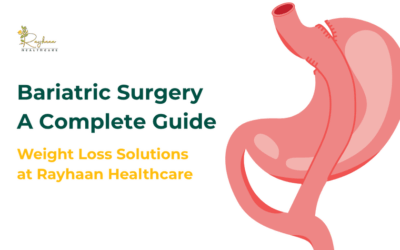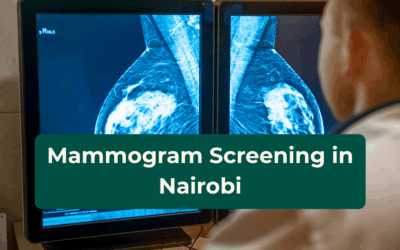Introduction
Obesity is a growing public‑health challenge in Kenya. Increased consumption of energy‑dense foods, reduced physical activity and urban lifestyles have contributed to a surge in overweight and obesity, particularly in urban centres like Nairobi and Mombasa. Excess weight increases the risk of type 2 diabetes, cardiovascular disease, sleep apnoea and certain cancers. In response, Kenyans have become increasingly interested in medical weight‑loss solutions, including injectable drugs such as Ozempic and various bariatric surgeries. Despite the hype around “miracle” injections, it is essential to understand what these treatments are, how they work, their benefits and risks, and how they compare with surgical options. This article provides an evidence‑based overview of ozempic kenya, weight‑loss injections in Kenya and weight‑loss surgery in Kenya.
What is Ozempic?
Ozempic® is the brand name for semaglutide, a synthetic version of the natural hormone glucagon‑like peptide‑1 (GLP‑1). GLP‑1 receptor agonists mimic the effects of the body’s own GLP‑1, which is released after meals to stimulate insulin and regulate appetite. Semaglutide has a 94 % structural similarity to human GLP‑1 and binds to GLP‑1 receptors in the gastrointestinal tract, pancreas and brain. When these receptors are activated:
- Glucose‑dependent insulin secretion increases and glucagon secretion decreases, improving blood‑sugar control.
- Gastric emptying slows, which helps people feel full for longer and reduces appetite.
- Activation of GLP‑1 receptors in the brain’s hypothalamus reduces hunger and increases feelings of satiety.
These actions make semaglutide effective for controlling blood sugar in type 2 diabetes and, at higher doses, for promoting weight loss. Semaglutide is marketed under different brand names: Ozempic (multi‑dose injection pens for diabetes), Rybelsus (oral tablets) and Wegovy (single‑dose injection pens for chronic weight management). According to StatPearls, Ozempic is FDA‑approved for glycaemic control in adults with type 2 diabetes and to reduce cardiovascular events. Wegovy is approved for long‑term weight management when combined with a reduced‑calorie diet and increased physical activity, typically for adults with a body‑mass index (BMI) ≥ 30 kg/m² or ≥ 27 kg/m² plus weight‑related conditions.
Ozempic vs Wegovy vs Mounjaro (Zepbound)
Although many people use Ozempic off‑label for weight loss, regulatory agencies emphasise that only Wegovy (semaglutide) and Zepbound (tirzepatide) are currently approved in the United States for chronic weight management. The Drugs.com comparison summarises the typical weight‑loss effect of different injectables
| Medication (active ingredient) | Approval status | Average weight loss | Notes |
|---|---|---|---|
| Ozempic (semaglutide) | Approved for type 2 diabetes and to reduce cardiovascular risk | ~6–7 % weight loss in diabetic adults | Often used off‑label for weight loss but not FDA‑approved for this purpose. |
| Wegovy (semaglutide 2.4 mg) | Approved for chronic weight management | ≈15 % average weight loss | Same active ingredient as Ozempic but at a higher dose. |
| Zepbound / Mounjaro (tirzepatide) | Approved for type 2 diabetes; approved as Zepbound for weight loss | Up to 21 % weight loss at the highest dose | Acts on GLP‑1 and GIP receptors; produced superior weight loss in trials compared with semaglutide |
The table shows that higher‑dose semaglutide (Wegovy) leads to greater weight loss than Ozempic, while tirzepatide produces even larger reductions. However, costs and availability vary. Wegovy and Zepbound are currently unavailable in Kenya, and Ozempic remains the most accessible GLP‑1 drug.
Evidence for Weight‑Loss Effects
Clinical trials show that Ozempic can help people lose weight when combined with lifestyle changes, but the results are moderate compared with newer weight‑loss drugs. According to Drugs.com, adults with type 2 diabetes taking Ozempic experience an average 6–7 % reduction in body weight. By contrast, Wegovy’s weight‑loss trials yielded ≈15 % body‑weight reduction, and Zepbound (tirzepatide) achieved up to 21 % weight reduction in adults without diabetes.
Harvard Health notes that GLP‑1 receptor agonists such as semaglutide and liraglutide can produce 10–20 % weight loss in people with obesity when combined with healthy lifestyle changes. However, the article cautions that these medications are designed for individuals meeting specific criteria (BMI ≥ 30 or BMI ≥ 27 with weight‑related conditions)and should not be regarded as quick fixes. People who stop taking them often regain weight unless they sustain long‑term dietary and physical‑activity changes.
Mechanism of Action and Administration
Ozempic is given as a once‑weekly subcutaneous injection using a prefilled pen. The dose is usually escalated over several weeks to minimise gastrointestinal side effects. Semaglutide’s long half‑life (≈1 week) results from structural modifications that promote albumin binding and protect the drug from breakdown. According to StatPearls, after subcutaneous administration, peak concentration occurs within 1–3 days and steady state is achieved after 4–5 weeks. Dosing typically starts at 0.25 mg per week, increasing to 0.5 mg and potentially 1 mg or 2 mg to meet glycaemic goalsncbi.nlm.nih.gov.
Because Ozempic delays gastric emptying, it may slow the absorption of other oral drugs; clinicians usually advise taking other medications at a different time. Patients converting from oral semaglutide (Rybelsus) start with 0.5 mg Ozempic the day after the last tablet. Injection sites (abdomen, thigh or upper arm) should be rotated to prevent tissue irritation.
Side Effects and Risks
Common Adverse Effects
Semaglutide is generally well tolerated, but it can cause several adverse effects. The StatPearls review lists gastrointestinal symptoms—nausea, vomiting, abdominal pain, constipation and diarrhea—as the most frequent reasons for discontinuation. About 20 % of patients using Ozempic or Rybelsus reported nausea, while 44 % of patients on Wegovy experienced similar effects. Decreased appetite, altered taste and dyspepsia also occur.
Other side effects include:
- Hypoglycaemia when combined with sulfonylureas or insulin
- Acute kidney injury linked to severe vomiting or dehydration.
- Gallbladder disease, possibly due to delayed gallbladder emptying.
- Anaphylaxis or angio‑oedema (rare but serious allergic reactions).
- Potential pancreatitis, although evidence is inconclusive; semaglutide’s stimulation of pancreatic islet cells may contribute.
- Diabetic retinopathy, especially in patients with pre‑existing retinopathy.
- Thyroid C‑cell tumours observed in rodents. Though human risk is unknown, semaglutide is contraindicated in individuals with personal or family history of medullary thyroid carcinoma or multiple endocrine neoplasia type 2.
Cost and Practical Considerations
At Rayhaan Healthcare, medically supervised weight‑loss injections start from KES 75,000 per month. This fee covers the injections, monthly check‑ins, nutritional and mental‑wellness support and progress tracking. The clinic emphasises that authentic injections cannot be bought over the counter; they must be prescribed and administered under the supervision of a licensed medical officer.
Contraindications and Warnings
Semaglutide should not be used by:
- People with type 1 diabetes or diabetic ketoacidosis.
- Individuals with personal/family history of medullary thyroid carcinoma or MEN 2 syndrome.
- People with severe gastrointestinal disease, pancreatitis or gallbladder disease.
- Pregnant or breastfeeding women because animal studies show potential fetal harm.
Additionally, those with a history of depression or suicidal ideation should exercise caution, as weight‑loss medications have been linked to mood changes.
Weight‑Loss Injections in Kenya
Availability and Regulation
The growing popularity of Ozempic has sparked interest among Kenyans seeking “quick‑fix” weight‑loss solutions, but legitimate sources emphasise medical supervision. Aauthentic weight‑loss injections are exclusively available at accredited clinics and cannot be purchased over the counter. Patients must undergo a medical assessment to determine eligibility, and they receive guidance on self‑administration only after professional training.
Rayhaan Healthcare and other reputable providers adhere to international guidelines: prescriptions are based on BMI, comorbidities and a patient’s ability to commit to lifestyle changes. People with uncontrolled eating disorders or certain psychological conditions may not qualify. Follow‑up is crucial to monitor weight changes, adjust doses and address side effects.
Cost and Expected Outcomes
At Rayhaan, the monthly cost of weight‑loss injections starts from KES 40,000. This includes weekly injections, monthly reviews and support from nutritionists and mental‑health specialists. The clinic estimates that patients can lose up to 15 % of their body weight, though actual results depend on adherence to diet and exercise.
Weight-loss injections such as semaglutide are often offered in structured programs that may combine medical supervision with lifestyle-coaching support. Prices vary depending on the dosage prescribed and whether patients choose a three-month or six-month plan
Mounjaro and Wegovy in Kenya
At the time of writing (September 2025), Wegovy (semaglutide 2.4 mg) and Zepbound/Mounjaro (tirzepatide) are not widely available in Kenya. Some clinics have expressed interest in importing Wegovy once regulatory approval is granted, but supply constraints and high global demand have caused shortages. When they become available, prices are expected to exceed those of Ozempic due to higher doses and patent status. Patients considering these medications should await official approval and consult qualified healthcare providers.
Weight‑Loss Surgery in Kenya
For people with severe obesity or those who fail to achieve sustainable weight loss through medication and lifestyle changes, bariatric surgery offers a more definitive intervention. Kenya has several centres offering internationally accredited bariatric procedures. Rayhaan Healthcare provides detailed information about these options and their typical outcomes.
Gastric Bypass (Roux‑en‑Y)
Gastric bypass surgery involves creating a small stomach pouch and rerouting a portion of the small intestine. This reduces food intake and nutrient absorption, leading to substantial and sustained weight loss. Gastric bypass can help patients lose 60–80 % of their excess weight within 12–18 months. It is particularly effective for patients with obesity‑related conditions like type 2 diabetes and hypertension.
The procedure is usually performed laparoscopically, resulting in shorter recovery times and less scarring. At Rayhaan, the cost of gastric bypass surgery is about KES 750,000, which includes pre‑surgery consultations, the surgery itself, hospital stay, medications and one year of follow‑up. Benefits include dramatic weight loss, improvement or remission of diabetes and hypertension, reduced appetite due to hormonal changes and improved quality of life. However, risks include nutritional deficiencies, potential surgical complications, permanent anatomical changes and the need for lifelong follow‑up.
Gastric Sleeve (Sleeve Gastrectomy)
Gastric sleeve surgery involves removing about 75–80 % of the stomach to create a narrow sleeve. This restricts food intake and significantly reduces the hunger hormone ghrelin. Patients can lose 60–70 % of excess weight within two years. The operation is performed laparoscopically with shorter recovery times and less discomfort.
The cost of a gastric sleeve at is around KES 750,000 , similar to gastric bypass. Advantages include large weight loss, resolution of diabetes and hypertension and reduction of hunger. Disadvantages include irreversibility, risk of blood clots or infection and potential long‑term problems such as gastro‑oesophageal reflux or staple‑line leaks.
Gastric Plication, Lap Band and Other Surgeries
- Gastric plication folds the stomach inwards to reduce its volume without removing tissue. There is a potential weight‑loss range of 30–55 % of excess weight, depending on individual factors. It is reversible but less commonly performed.
- Lap band surgery places a silicone band around the upper stomach, allowing weight loss of about 50 % of excess weight. The procedure is adjustable and reversible but requires frequent adjustments and carries a risk of band slippage.
- Revision surgery is available for patients who have had previous bariatric operations and need further intervention.
The cost of bariatric surgery in Kenya ranges from KES 300,000 to KES 1,000,000 depending on the procedure, surgeon’s expertise and hospital. Patients must undergo pre‑operative assessments and commit to lifestyle modifications and follow‑up care.
Non‑Surgical Weight‑Loss Procedures
Not everyone is ready for surgery or injections. Rayhaan Healthcare offers non‑surgical options such as the gastric balloon, Allurion balloon and endoscopic sleeve gastroplasty (ESG):
- Gastric balloon involves placing an inflatable silicone balloon in the stomach, reducing capacity and promoting fullness. Patients may lose 10–20 % of excess weight. The procedure is reversible and typically removed after six months.
- Allurion balloon is swallowed as a capsule; it expands into a balloon without endoscopy and is removed after around 16 weeks. It produces similar weight‑loss results (10–15 %).
- Endoscopic sleeve gastroplasty (ESG) uses sutures to reduce stomach size without surgery. Weight loss is usually 15–20 % of excess weight. ESG is less invasive than surgical sleeve gastrectomy but still requires sedation and carries risks.
These procedures cost between KES 300,000 and KES 500,000, depending on the clinic and package. They are attractive to individuals who need a “kick‑start” to weight loss but are not ready for permanent surgery.
Comparing Weight‑Loss Options in Kenya
The following table summarises the main medical weight‑loss interventions available in Kenya. Percentages refer to excess weight loss (EWL) rather than total body‑weight loss.
| Treatment | Typical EWL | Cost Range* | Pros | Cons |
|---|---|---|---|---|
| Ozempic (semaglutide) | 6–7 % total body‑weight loss in diabetic adults (15 % EWL) | KES 35,000–80,000 | Simple weekly injection; improves blood sugar and reduces cardiovascular risk | Off‑label for weight loss; modest effect; nausea and other side effects; requires long‑term use. |
| Wegovy (semaglutide 2.4 mg) | ≈15 % total body‑weight loss | Not yet widely available in Kenya (expected to be more expensive than Ozempic) | Greater weight loss than Ozempic; FDA‑approved for weight management | High cost; supply shortages; similar side‑effect profile. |
| Mounjaro (tirzepatide) | Up to 21 % total body‑weight loss | KES 40,000–80,000 | Superior weight‑loss results; dual hormone action (GLP‑1 & GIP) | Not approved or available locally; potential side effects include nausea and diarrhoea. |
| Gastric bypass surgery | 60–80 % EWL | KES 750,000 (includes surgery and one‑year follow‑up) | Dramatic, sustained weight loss; remission of diabetes and hypertension | Irreversible; risk of nutritional deficiencies and surgical complications. |
| Gastric sleeve surgery | 60–70 % EWL | KES 750,000 | Effective weight loss; decreases ghrelin and hunger | Irreversible; risk of leaks and acid reflux |
| Gastric plication / Lap band | 30–55 % EWL (plication); 50 % EWL (lap band) | KES 300,000–600,000 | Reversible or adjustable; less invasive than gastric bypass | Lower weight loss; may require revisions; risk of band slippage. |
| Gastric balloon / Allurion balloon | 10–20 % EWL | KES 300,000–500,000 | Non‑surgical and reversible; short recovery time | Temporary; weight regain possible after balloon removal; mild gastric discomfort. |
| Endoscopic sleeve gastroplasty (ESG) | 15–20 % EWL | KES 400,000–600,000 | No external incisions; reversible; shorter recovery than surgery | Weight loss less than surgical sleeve; requires sedation; potential risks. |
*Costs are approximate and may vary by clinic and surgeon. Always consult healthcare providers for personalised estimates.
Choosing the Right Option
Selecting a weight‑loss intervention requires careful assessment of a patient’s health status, BMI, co‑existing diseases, budget and personal preferences. Medication such as Ozempic may suit individuals with mild obesity who want a non‑surgical approach and have adequate financial resources for monthly treatment. It is particularly beneficial for patients with type 2 diabetes or metabolic syndrome because it improves blood sugar and cardiovascular outcomes. However, the modest weight‑loss effect (around 6–7 % of body weight) means patients must commit to diet and exercise to achieve significant results. Moreover, they must continue the injections long term to maintain weight loss.
Bariatric surgery is recommended for people with severe obesity (BMI ≥ 35 with comorbidities) or those who have repeatedly failed non‑surgical methods. Surgery offers the highest chance of dramatic, sustained weight loss and remission of obesity‑related diseases, but it carries surgical risks and requires lifelong nutritional monitoring. People considering surgery should weigh the benefits against potential complications and cost.
Non‑surgical procedures like the gastric balloon or endoscopic sleeve offer a middle ground: they provide more significant weight loss than medications but are less invasive than surgery. They are reversible and appealing to individuals who need a temporary intervention to jump‑start healthier habits. However, because the stomach returns to normal size after balloon removal, weight regain is common without long‑term lifestyle changes.
Lifestyle Changes – The Foundation of Weight Management
Regardless of the chosen intervention, sustainable weight loss requires lifestyle modifications. Harvard Health stresses that all weight‑loss drugs are meant to aid rather than replace healthy eating and regular physical activity. People who stop taking these medications and revert to unhealthy habits often regain the weight. Evidence‑based strategies include:
- Balanced diet emphasising whole grains, vegetables, fruits, lean proteins and healthy fats; limiting processed foods and sugary drinks.
- Regular physical activity (150–300 minutes of moderate exercise per week) and strength training to preserve muscle mass.
- Sleep and stress management, which influence hormones that regulate hunger and satiety.
- Behavioural counselling or support groups to address emotional eating and sustain motivation.
Rayhaan Healthcare integrates nutrition counselling and mental‑health support into its weight‑loss programmes, recognising that addressing psychological factors is crucial for long‑term success.
Conclusion
The rising popularity of Ozempic and other weight‑loss injections has sparked hope among Kenyans seeking effective ways to tackle obesity. Semaglutide works by mimicking the GLP‑1 hormone to improve blood‑sugar control and reduce appetite, leading to moderate weight loss when combined with diet and exercise. In Kenya, Ozempic programmes cost around KES 40,000 to KES 75,000 per month and must be supervised by licensed medical practitioners.
For individuals with severe obesity, bariatric surgery offers the most dramatic and lasting weight‑loss results, with options such as gastric bypass and gastric sleeve available at reputable Kenyan clinics. Non‑surgical procedures like the gastric balloon provide less invasive alternatives but require ongoing lifestyle changes to maintain progress. Ultimately, the choice of intervention should be personalised, with advice from qualified healthcare providers, realistic expectations and a commitment to long‑term behavioural change.
Rayhaan Healthcare advocates for safe, evidence‑based weight‑management strategies. Whether you are considering Ozempic, exploring non‑surgical procedures or evaluating bariatric surgery, consult a healthcare professional to determine the best path for your health and goals. Sustainable weight loss comes not from a miracle injection but from a comprehensive approach that combines medical interventions with healthy living.









